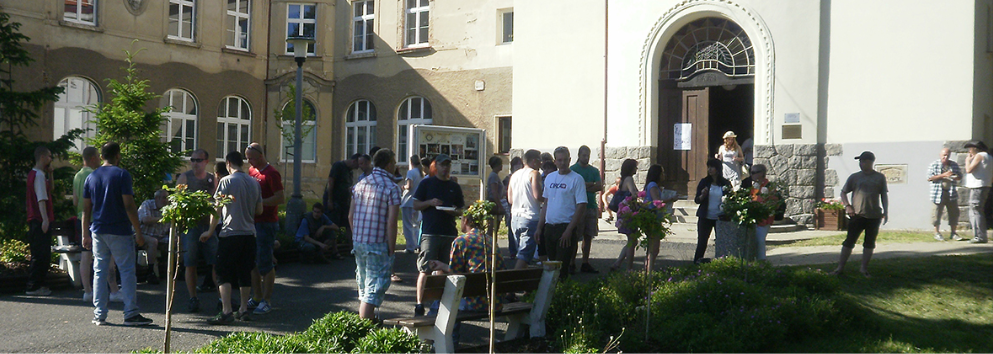Warning: "continue" targeting switch is equivalent to "break". Did you mean to use "continue 2"? in /home/html/pnhberkovice.cz/public_html/pnhberkovice.cz/templates/pnhob_ckr_tmp/functions.php on line 177
Characteristics of the Psychiatric Hospital of Horní Beřkovice
The Horní Beřkovice Psychiatric Hospital, a state medical facility, focuses on the comprehensive treatment of psychiatric illnesses. The catchment area of the hospital is about 1.5 million inhabitants, mainly in the Ústí nad Labem Region, as well as in a part of the Liberec Region and in the Mělník and Kladno districts.
The project (treatment of mental illnesses) is targeted at 220 patients with a psychiatric diagnosis.
Psychiatric rehabilitation is conceived as major elimination of the weak point of health and social care for patients with psychiatrically diagnosed mental illnesses. The Horní Beřkovice Psychiatric Hospital provides system-oriented services to develop skills that enable clients to function in society.
Within the project carried out in 2016/2017, together with the Focus assisting organizations, the Horní Beřkovice Psychiatric Hospital identified the needs of the patients and set up a comprehensive system of integrated psychiatric rehabilitation in the new conditions of the infrastructure which allows effective implementation of social rehabilitation elements.
Based on the long-term concept, the psychiatric hospital infrastructure is supplemented and reconstructed to meet the requirements for effective treatment of long-term patients. The Multifunctional Cultural Centre, the Garden Work Centre and the Joinery Workshop are used. A strong activating element was the establishment of an Internet café to acquaint clients with communication technologies, as well as the follow-up programme of the JOB Centre, i.e. working in the café as part of the therapeutic activities.
Workplaces for social rehabilitation of long-term hospitalized patients with serious mental illnesses (SMI) were created in 2017. An extended social rehabilitation programme is implemented in this group in the reconstructed buildings of the former monastery and warehouses. Conversation rooms for individual work with clients, art workshops, a gymnasium and therapeutic social halls have also been created. Training is provided at both the theoretical and practical levels, and subsequently, after the client is released, in the follow-up care facilities provided by the partners in assisting organizations.
Target group
- F10–F19 Mental and behavioural disorders due to psychoactive substance use
- F20–F29 Schizophrenia, schizotypal and delusional disorders: 40 % (30 % men, 10 % women)
- F30–F39 Mood (affective) disorders: 4 % (3 % men, 1 % women)
- F40–F48 Neurotic, stress-related and somatoform disorders: 2.9 % (1.4 % men, 1.5 % women)
- F60–F69 Disorders of adult personality and behaviour: 9.5 % (8.5 % men, 1 % women)
